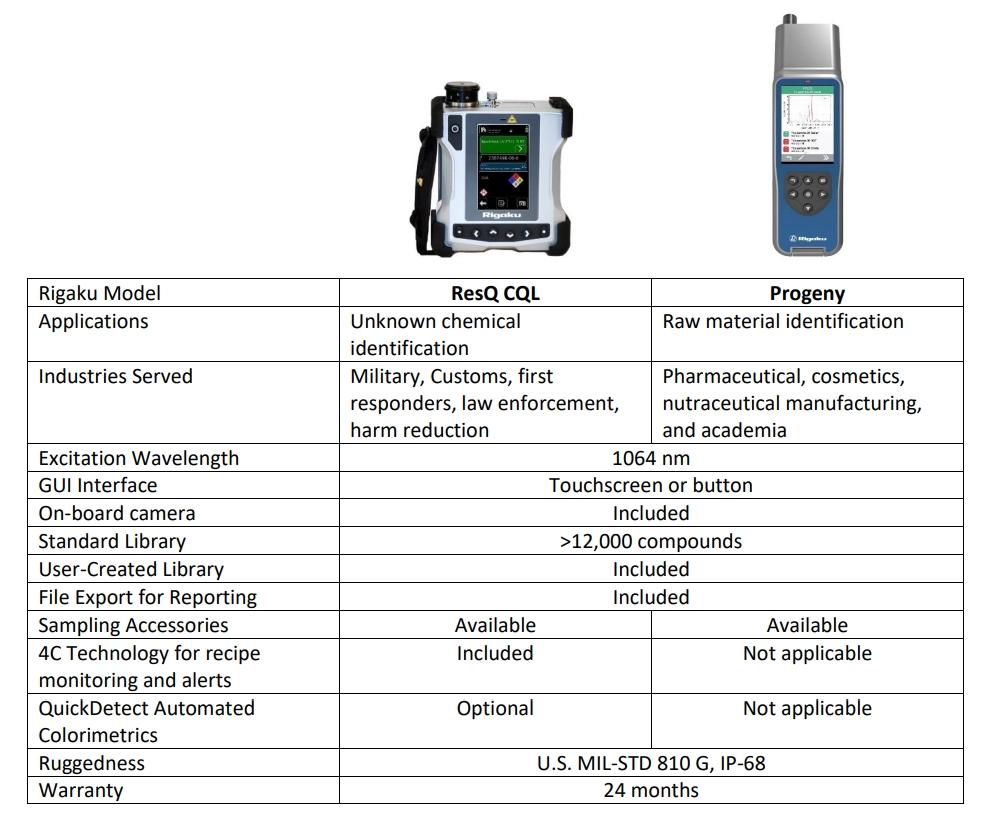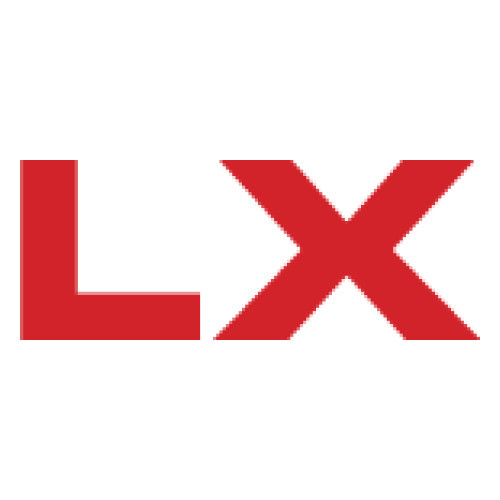
Handheld Raman Analyzers for Rapid In-Field Chemical Analysis
This guide from Rigaku explores the many applications of handheld Raman analyzers in the field
What is Handheld Raman?
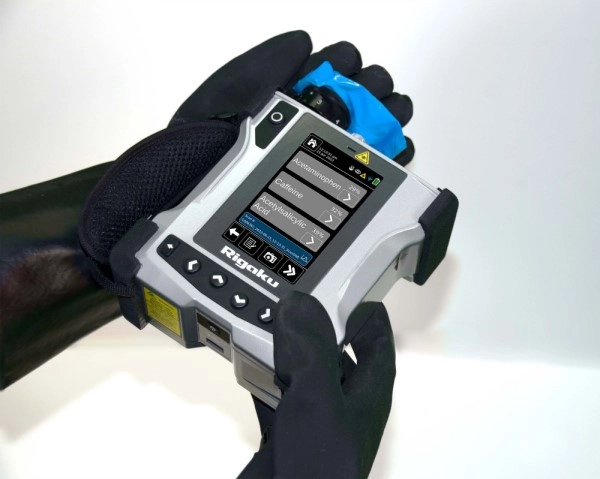 Raman
spectroscopy is a highly efficient technique for identifying chemicals. While
the Raman Effect has been known for almost 100 years, recent developments have
enabled Raman spectrometers to be packaged into compact, field portable
instruments suitable for use by police, emergency services crews, border
security/customs, the military, and first responders. Furthermore, their
simplistic operation and ability to provide chemical analyses in just seconds
make them ideally suited to a vast number of practical applications such as
identification of drugs, explosives, chemical warfare agents, hazardous
materials and routine quality control.
Raman
spectroscopy is a highly efficient technique for identifying chemicals. While
the Raman Effect has been known for almost 100 years, recent developments have
enabled Raman spectrometers to be packaged into compact, field portable
instruments suitable for use by police, emergency services crews, border
security/customs, the military, and first responders. Furthermore, their
simplistic operation and ability to provide chemical analyses in just seconds
make them ideally suited to a vast number of practical applications such as
identification of drugs, explosives, chemical warfare agents, hazardous
materials and routine quality control.
Handheld Raman spectrometers allow non-destructive analysis and are able to scan through packaging, which streamlines the process while also protecting operators from the risk of exposure. The specificity of Raman comes from it being a vibrational spectroscopy technique. Any chemical or physical changes that result from molecular vibrations will change the Raman spectrum making it highly sensitive to chemical—and some physical—differences in materials.
How does Raman work?
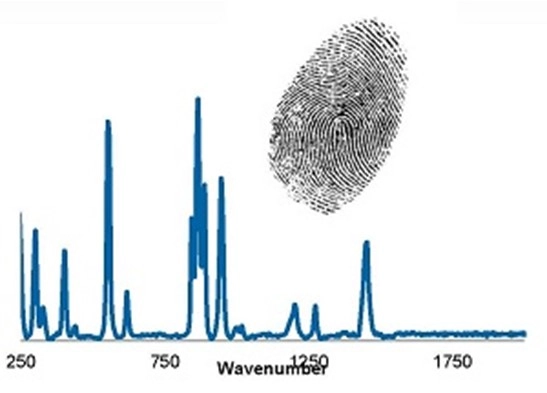 Raman
spectroscopy is an established vibrational technique that works by first
exciting a sample with a laser. A small portion of this light undergoes
“inelastic scatter” (also referred to as the Raman scatter or the Raman
Effect). The return signal is received and read by a detector, resulting in
what is referred to as a Raman spectrum. The Raman spectrum contains a series
of peaks that relate to features in the sample’s molecular structure. Each
compound’s Raman spectrum is unique and serves as a “chemical fingerprint” that
can be used to identify an unknown compound, or a mixture of compounds. More
information on how Raman Spectroscopy works is available on Rigaku's website.
Raman
spectroscopy is an established vibrational technique that works by first
exciting a sample with a laser. A small portion of this light undergoes
“inelastic scatter” (also referred to as the Raman scatter or the Raman
Effect). The return signal is received and read by a detector, resulting in
what is referred to as a Raman spectrum. The Raman spectrum contains a series
of peaks that relate to features in the sample’s molecular structure. Each
compound’s Raman spectrum is unique and serves as a “chemical fingerprint” that
can be used to identify an unknown compound, or a mixture of compounds. More
information on how Raman Spectroscopy works is available on Rigaku's website.
Why 1064 nm Raman?
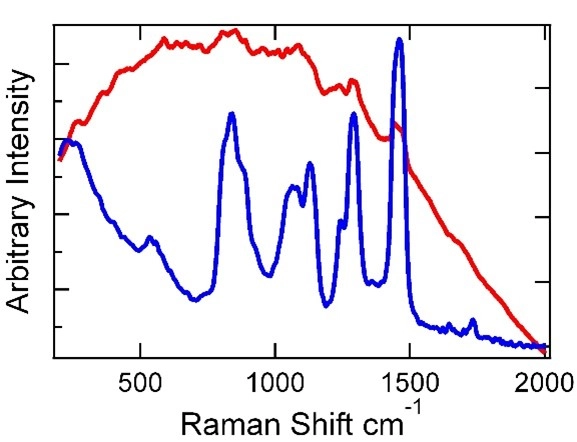
- Identification of colored, dirty, or impure samples
- Scanning through colored wrappings, packaging, or containers
- Analyzing mixtures without additional operator action
- Generating results in less than 1 minute
Key design features of a Handheld Raman Spectrometer
What is most important when taking an analytical technique and putting it to use in the field? Ensuring it is fit for purpose in both hardware and software design.
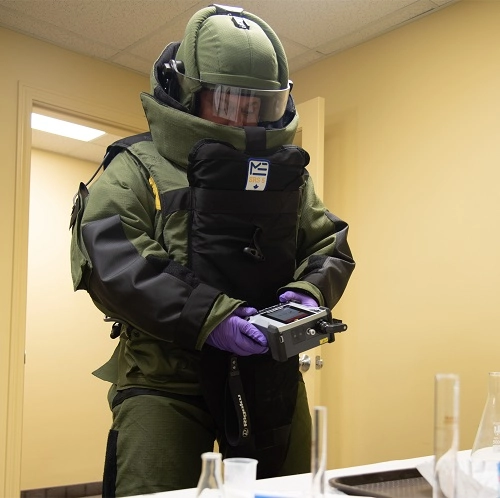 As the pioneer
in handheld 1064 nm Raman technology, Rigaku Analytical Devices now has
thousands of units deployed for in-field use. Based on their award-winning
platform (R&D 100 Award in 2015), Rigaku handheld Raman analyzers are
optimized as high quality 1064 nm excitation handheld Raman spectrometers. They
are small, lightweight, rugged, versatile, and easy to use without compromising
spectral quality. Each module, or major functional component, of the Rigaku ResQ CQL and Rigaku Progeny have been designed and built to meet these
requirements.
As the pioneer
in handheld 1064 nm Raman technology, Rigaku Analytical Devices now has
thousands of units deployed for in-field use. Based on their award-winning
platform (R&D 100 Award in 2015), Rigaku handheld Raman analyzers are
optimized as high quality 1064 nm excitation handheld Raman spectrometers. They
are small, lightweight, rugged, versatile, and easy to use without compromising
spectral quality. Each module, or major functional component, of the Rigaku ResQ CQL and Rigaku Progeny have been designed and built to meet these
requirements.
Hardware Design
Handheld Raman devices such as those manufactured by Rigaku are designed to be used by field operators in high-stress environments. As such, they feature compact, rugged designs for easy transportation (including purpose-designed travel cases) and field use. The Rigaku portfolio of handheld Raman analyzers are certified to MIL-STD-810G — a US. Department of Defense test method standard, as well as IP-68 rated enclosure, protecting it against dust and dirt.
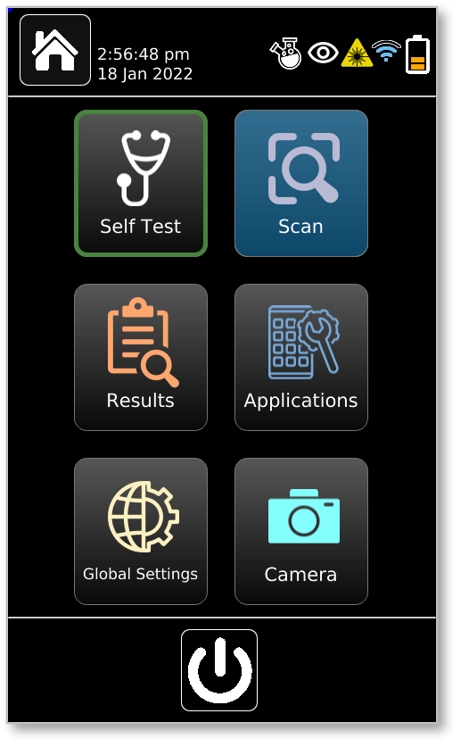 GUI
GUI
Rigaku analyzers also benefit from an intuitive touchscreen interface that requires minimal training to use. The interface itself features a large icon driven menu that can be operated by a user wearing full PPE.
Library
Components / Chemical Recipes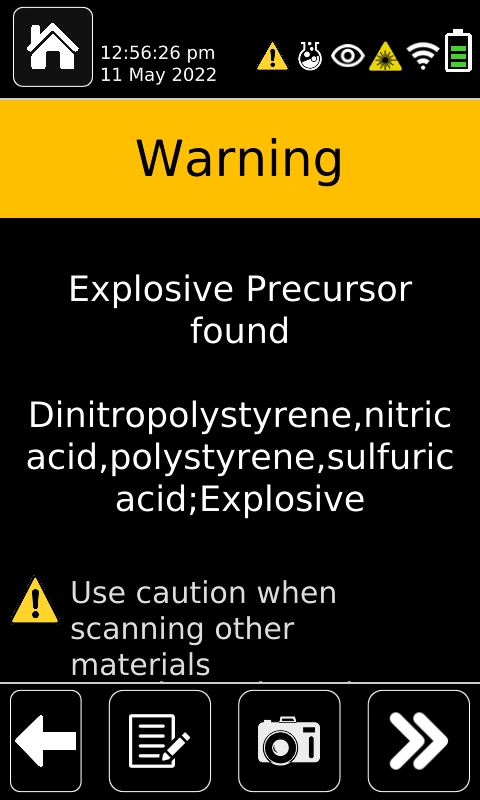
The ResQ CQL features an on-board library of over 12,000 chemical substances for identifying unknown substances. This library can be added to and updated at any time by the user.
4C Technology is standard on the ResQ CQL. This feature expands incident response by warning users of potentially dangerous combinations while scanning individual chemicals.
Alternatively, for quality control applications, the Progeny can be used for rapid screening in pass/fail mode with operators able to set suitable thresholds to define levels of acceptability.
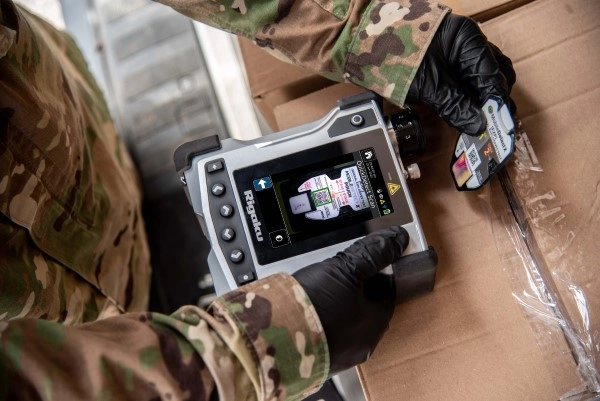 On-Board
Camera
On-Board
Camera
The on-board camera of Rigaku analyzers offers the ability to capture pictorial evidence that can be used for traceability in reporting. It can also be used as a barcode scanner for error-free sample information entry.
Ability to Scan Through Packaging
The nose cone of Rigaku analyzers is adjustable to allow for scanning through different thickness and types of packaging.
Identify Low Concentration Levels
The optional QuickDetect feature of the ResQ CQL allows for detecting non-visible amounts of a substance.
Applications of Handheld Raman Devices
The use of Handheld Raman spectrometers is increasing as knowledge of their application and versatility grows. Some examples of where they are currently used are contained in the following sections.
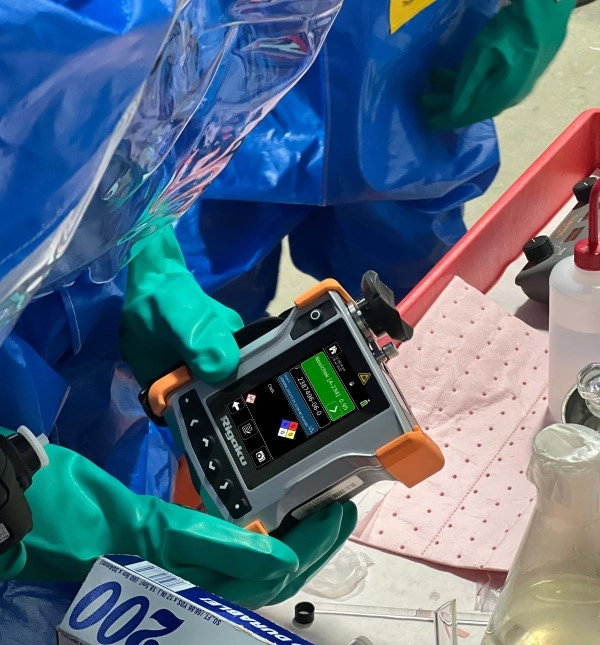 Chemical
Threat Analysis
Chemical
Threat Analysis
Police, customs agents, the military, and other emergency and first responders are often required to deal with chemicals of unknown nature and origins such as explosives chemical warfare agents, toxic industrial materials, or household hazardous materials. Handheld Raman provides a fast and effective method for them to identify unknown substances, even through packaging. The US Department of Defense has undertaken a commitment to modernize its DR SKO (Dismounted Reconnaissance Sets, Kits and Outfits) systems around the world, using Rigaku ResQ CQL 1064nm handheld Raman spectrometers to better respond to potential chemical threats. Read the full story here: Second Generation Handheld Raman Chosen as Part of the U.S. JPEO CBRND Modernization Program.
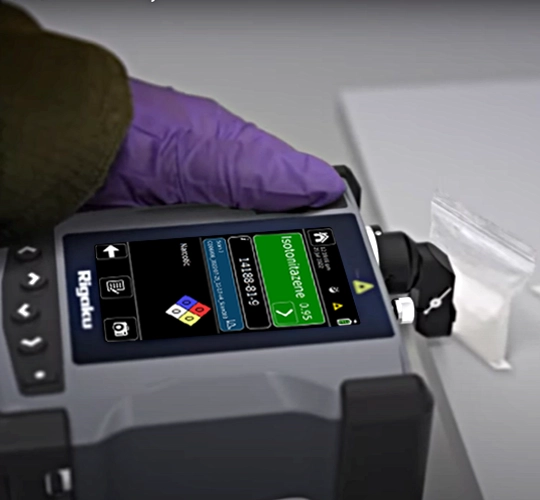 Illicit Drug
and Counterfeit Screening
Illicit Drug
and Counterfeit Screening
Many illicit drugs are manufactured in backyard laboratories with little or no quality control and the supply of these substances offers an avenue for substitution or contamination using potentially toxic cutting agents. Handheld Raman provides a crucial role in screening drugs via a simple test for chemicals that can easily discern illicit or counterfeit drugs from legitimate pharmaceuticals and other chemicals that they may be hidden with. Similarly, it can be used to detect precursor chemicals.
For example, a Rigaku ResQ handheld Raman was used by Thai authorities to identify crystal meth bound for Taiwan, hidden in powdered form. As a result, Thai customs officials intercepted nearly 900 kg of crystal methamphetamine worth $88m.
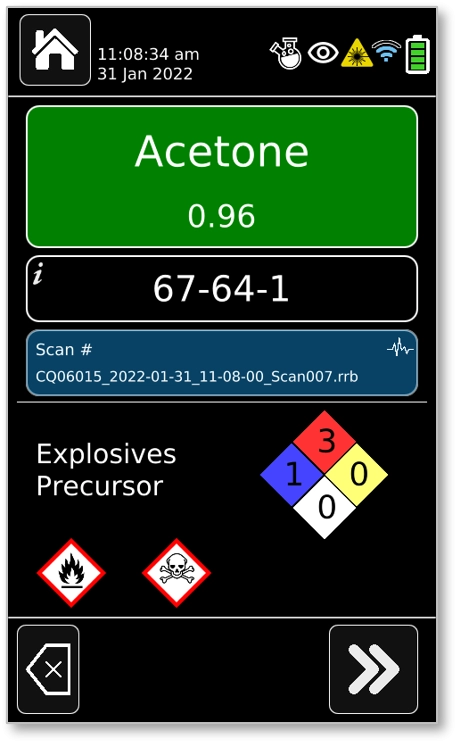 Precursor
Chemicals
Precursor
Chemicals
Precursor chemicals are used in the illegal manufacture of illicit drugs or explosives. These chemicals can be obtained legally and are monitored when purchased in large quantities. However, they are often disguised among criminal trafficking groups. Handheld Raman is an excellent application to verify the shipments during the transportation process. Read this case study about how the Rigaku ResQ CQL was used to degrade the illicit precursor supply chain in Myanmar.
Hazardous Household Chemicals
Common materials found in homes and businesses have the potential of creating hazardous waste if not disposed of properly, especially when their containers break or leak. First responders have the need to identify these potentially hazardous materials immediately to correctly mitigate the potential threat to others. Raman technology provides responders with a molecular fingerprint of substances and material identification. Raman spectroscopy is a non-destructive, non-contact method and can be used to analyze through glass, plastic bags, and bottles, providing protection from potentially hazardous exposure.
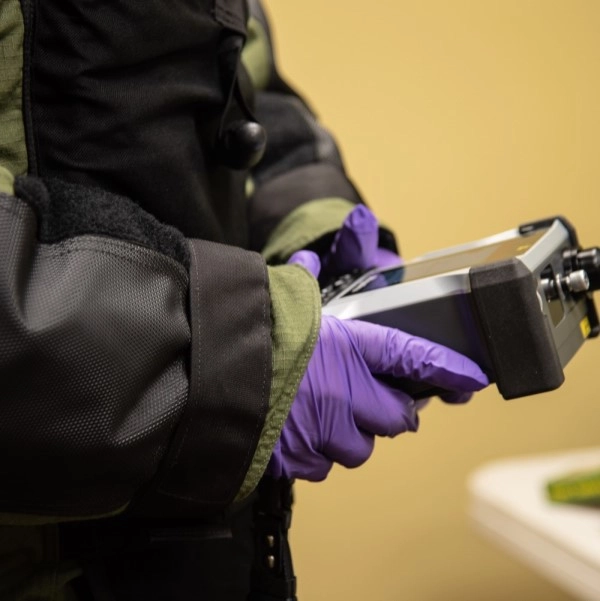 Homemade
Explosives
Homemade
Explosives
As commercial explosives become more difficult to obtain, terrorists turn to producing homemade explosives (HMEs). HMEs are typically produced in makeshift labs using materials that can be easily obtained by the public. Because HMEs are synthesized under improvised conditions the product typically contains impurities, many of which color the sample and produce fluorescence, so they are difficult to analyze with traditional 785 nm-based Raman systems.
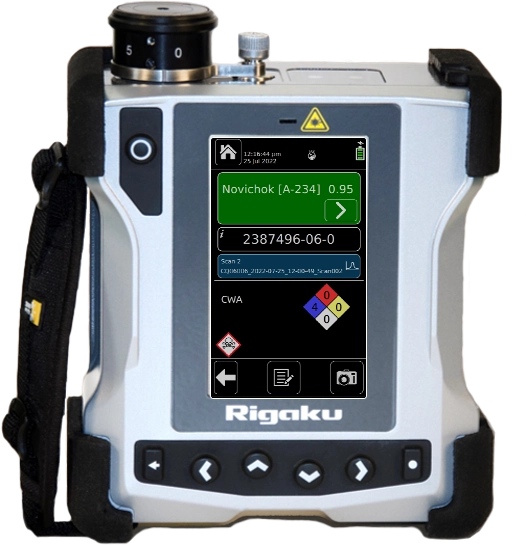
Chemical Warfare Agents
History shows that chemical warfare agents (CWAs) are the most widely proliferated and used weapons of mass destruction (WMDs). Unlike ultrapure laboratory grade chemicals, munitions-grade CWAs are likely to contain impurities from the storage container, degradation, or unreacted precursors, all of which often cause fluorescence when analyzed using 785 nm-based Raman analyzers. In order to minimize fluorescence in these types of real-world threats, the Rigaku portfolio of handheld Raman analyzers uses a longer wavelength laser at 1064 nm, which leads to more reliable identifications and shorter measurement times.
Check out this case study to learn more about the use of Rigaku 1064 nm Raman in conflict regions: “On-site Presumptive Identification in Post-Isis Occupied Territories Mission Profile Case Study.”
Quality Assurance/Control in Pharmaceutical Manufacturing
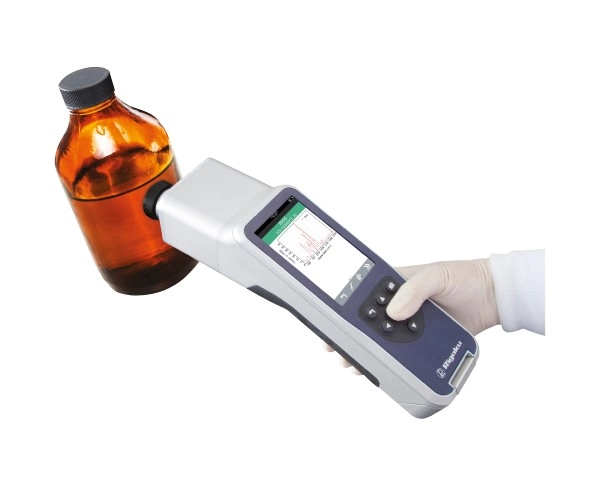 The
manufacture of pharmaceuticals is a precise science. The exact chemical
composition of the final product will directly impact its efficacy. This
chemical composition can often be directly correlated to the purity of
materials, which can be easily checked and monitored using handheld Raman
devices. Handheld Raman can also be used to quickly check the composition of
final products as well.
The
manufacture of pharmaceuticals is a precise science. The exact chemical
composition of the final product will directly impact its efficacy. This
chemical composition can often be directly correlated to the purity of
materials, which can be easily checked and monitored using handheld Raman
devices. Handheld Raman can also be used to quickly check the composition of
final products as well.
The success of manufacturing operations relies on processes operating within specified limits. When these operations require raw materials, the Rigaku Progeny handheld Raman can provide a convenient way to confirm the chemical makeup of raw materials. Knowledge of raw materials’ chemical analysis means they can be rejected before they make their way into the workflow if they do not meet specifications, e.g., if they have been incorrectly labeled. This can help avoid issues and prevent considerable expense if the raw material issue is not realized until the QC of the final product. Similarly, small variations in the chemical composition of the raw materials can be compensated for if detected early. Listen to this roundtable by pharmaceutical manufacturers about their use of handheld Raman: Successes & Challenges of Making Changes to Pharma Workflow.
Products
